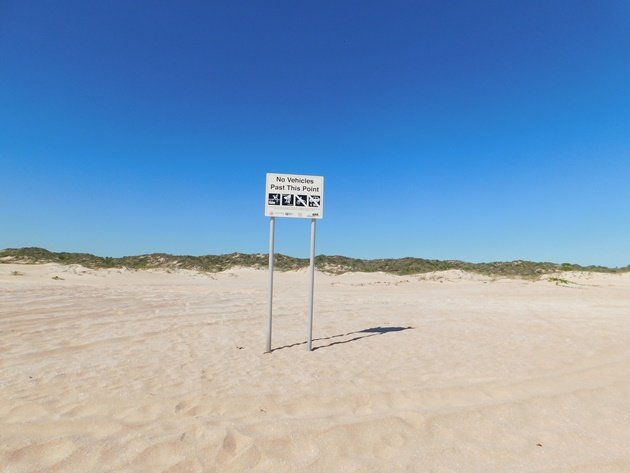
A few weeks ago I introduced you to the first pair of Pied Oystercatchers to start to breed this year. It is earlier than other years, but now some of the other pairs of Pied Oystercatchers have started to nest. Broome’s Cable Beach has become a lot busier over recent weeks. It is school holidays now and many people have travelled north to enjoy sun, sea and sand. Western Australia still has closed borders, but there has been a lot of movement around the state.
Vehicles are permitted to drive onto Cable Beach in an area north of the rocks. The speed limit is restricted to 15km/hr for everybody’s safety and you are asked to keep vehicle impact to a minimum. There are signs asking you not to go above the high tide mark as in the header photo. There are good reasons for this rule. It protects nesting shorebirds year round. It also protects nesting turtles, which nest later in the year. The vehicle access is closed around the biggest high tides when the turtles are nesting to protect them and their nest sites.
Pied Oystercatcher flying in front of the sign
In recent weeks there has been little regard for the signage and vehicles have gone over the back of the dunes. The pair of Pied Oystercatchers that nest in this area patrol the area, but there is not a lot they can do when vehicles come into their nesting area.
Vehicle tracks behind the dune system in the nesting area
This pair of Pied Oystercatchers bred successfully last year and had five years earlier. They prefer to nest on sand, but other Pied Oystercatchers always choose a rocky outcrop to nest on.
Pied Oystercatcher near the nest
We have to hope that vehicles stop driving beyond the high tide mark and that the eggs hatch out in twenty eight days’ time. The nest site has been used in previous years and if it fails they will lay a second clutch of eggs. Depending on the reason for the nest failure they will nest either there or at a nearby location.
Pied Oystercatcher nest on the sand
Another pair of Pied Oystercatchers closer to Gantheaume Point have laid their eggs. They have always nested in the same place and like a nest with a view. The nest site they choose is always on the grey rocky outcrop overlooking the beach. They are the only pair of Pied Oystercatchers that we know of in the Broome area that have successfully raised three chicks and that was in 2014. They do not need to worry about vehicles at the nest site. However, they do need to pass through a section of beach to get to Gantheaume Point that vehicles use. They have always made the journey successfully and we believe it is done at night by the tracks we have followed over the years.
Pied Oystercatcher nest with a view
I appreciate you maybe can’t see the Pied Oystercatcher eggs in the above photo. I have circled them for you in the photo below and then you can see where they are in subsequent photos.
Pied Oystercatcher nest
As you can see, there is quite a variation in the colour of the eggs in both pairs of Pied Oystercatchers. This is not unusual at all and there have been completely white eggs laid some years. On occasions when you see the first egg laid and then the subsequent egg they are easily identified apart. The first egg laid is not necessarily the first egg to hatch.
Cable Beach is a beautiful beach as you can clearly see. If you do need to take your vehicle onto the beach then please respect the signage! Let’s give our resident shorebirds half a chance!


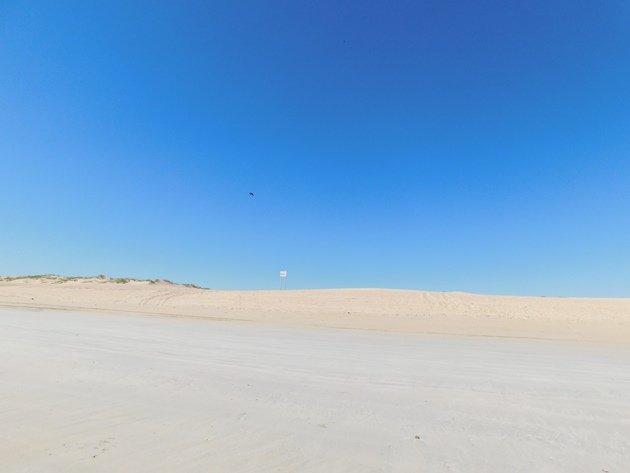
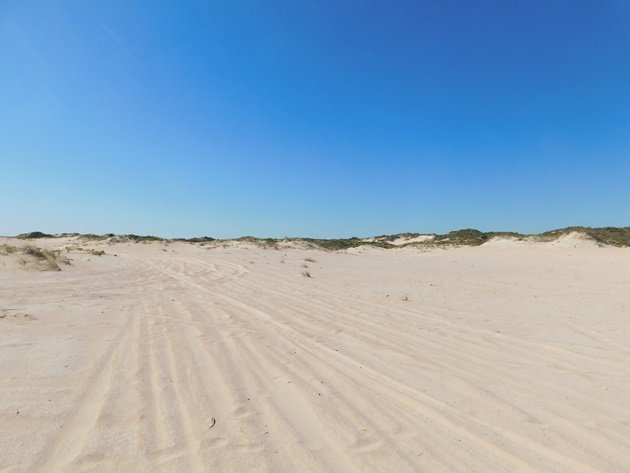
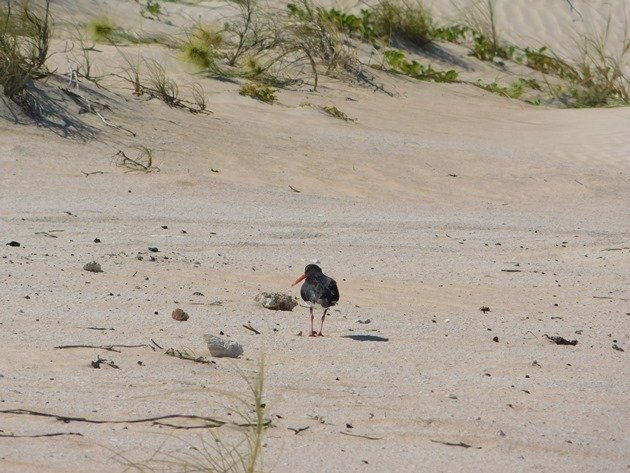
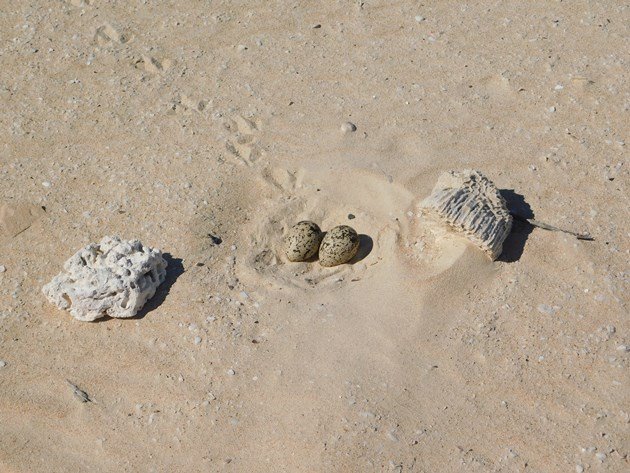
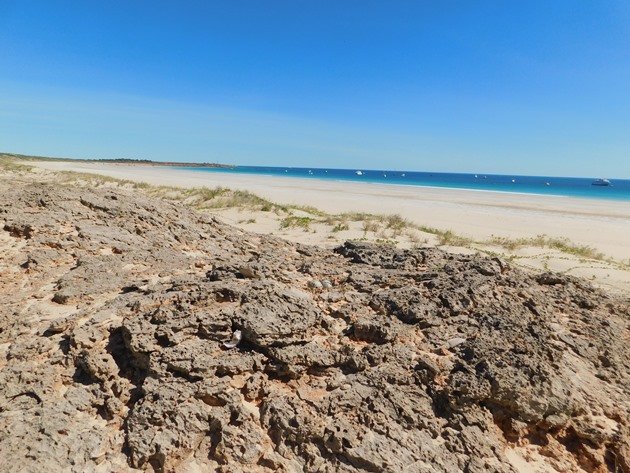
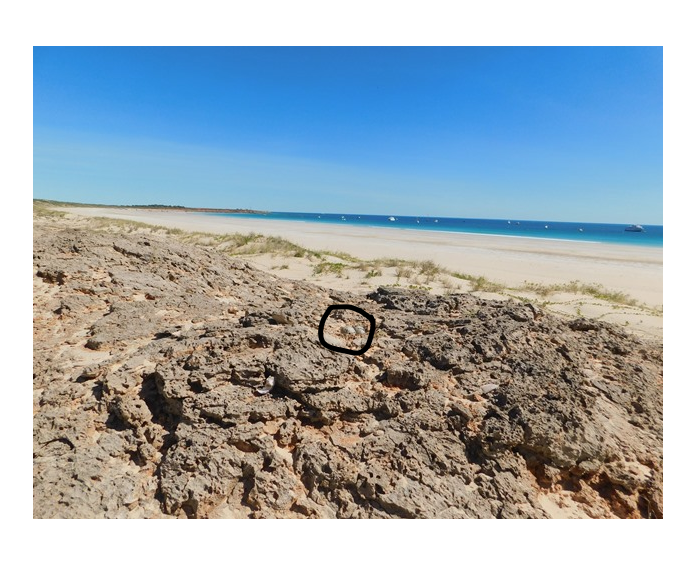
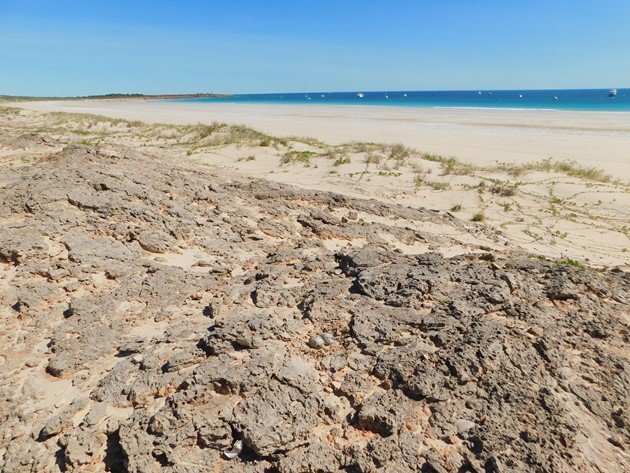
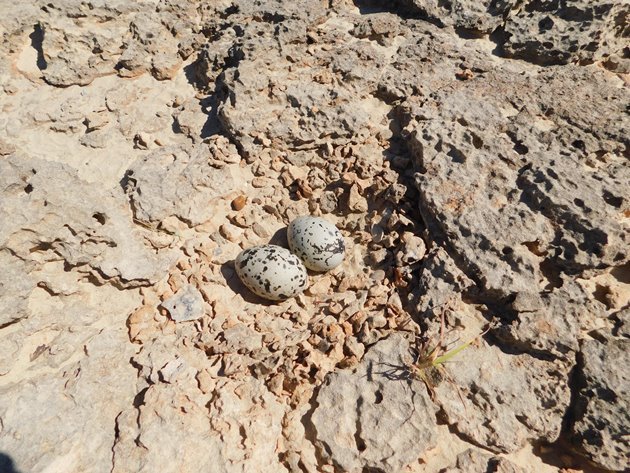





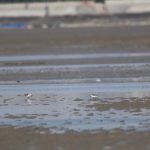
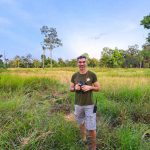
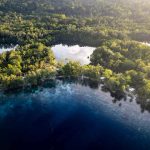
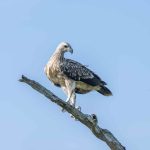
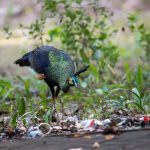
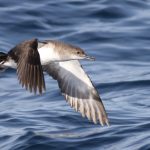
Hi Clare,
Your blogs are terrific. Always interesting and informative. Great photos, too. You certainly live in a beautiful part of the world. Those Pied Oystercatchers are plucky little gems and I’m so sorry to read that drivers don’t adhere to the rules about staying off the beaches.
Incidentally, I recently virtually “met” Nyil Khwaja from the Observatory. He was very complimentary about you and your husband! He mentioned that there are numerous Osprey nests along your coast. Do you ever come across them in your travels? It sounds like Broome is THE place for birders in Western Australia!
Thanks very much for giving us a glimpse into your birding world. Do you also contribute to iNaturalist?
Best,
Lisa (a transplanted South African, and novice birder living in New Jersey)
Hi Lisa,
Thanks for the compliments!
Yes, we do live in a beautiful part of the world with excellent birding opportunities! There are Osprey nests in town, so you don’t need to go too far to find them! We don’t contribute to iNaturalist. Hopefully one day you can travel to Australia and enjoy all of our wildlife!
Keep safe,
Clare.
Saving my pennies and vacation time since international travel isn’t an option from the U.S. at present. But when it is, Broome is one of the places at the top of my list! Take care and be safe. All best, Lisa
Lisa,
Yes, we are all looking forward and hoping to travel outside of Western Australia to other parts of Australia one day and overseas at a later date. Keep positive and keep safe!